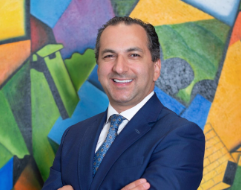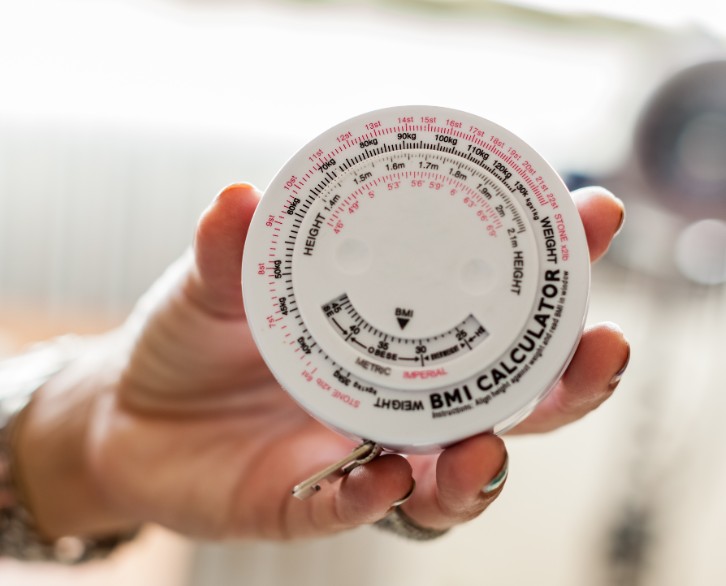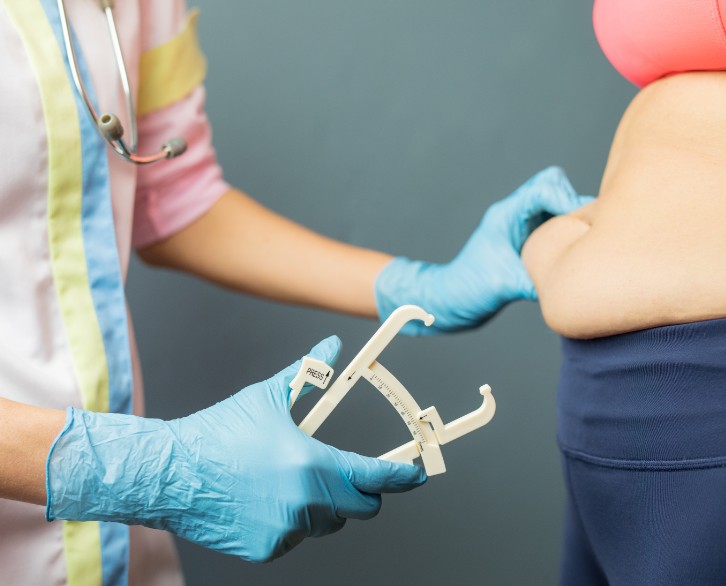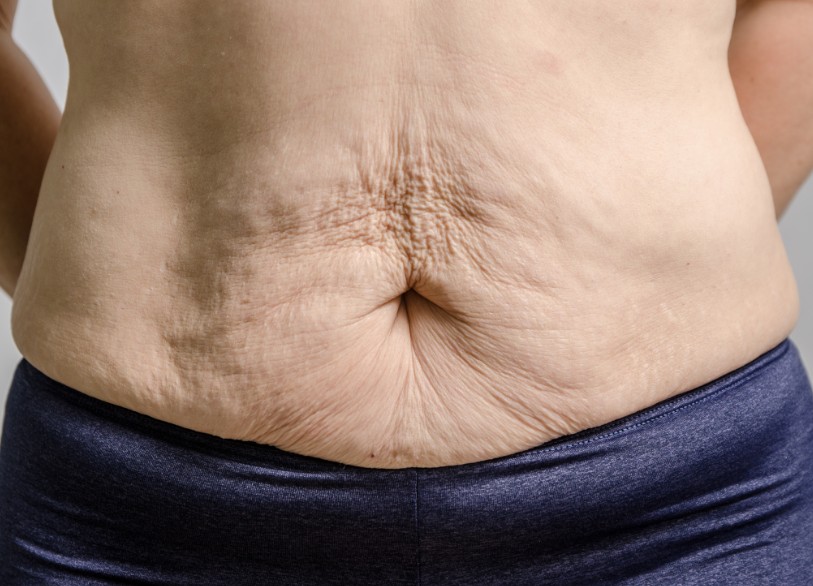
We’re frequently asked questions about what happens to your body after weight loss, whether the weight loss is post-surgery or through diet, nutrition and exercise — or a combination of those. One common side effect of any type of weight loss program is excess loose skin.
Dramatic weight loss can lead to excess skin, which for some people can be not only a cosmetic concern but also physically uncomfortable. Loose skin can cause uncomfortable chafing and rashes. Some weight-loss patients are unhappy with the way their clothes fit and their bodies look because of the sagging skin.
As you explore weight-loss options, make sure you talk with your doctor about what will happen after you lose weight. If you’re concerned about having more surgery to deal with the excess skin, there are some non-surgical options, which we’ll discuss later in this post. We’ll cover the advantages and disadvantages of each method, as well as information about surgery to reduce loose skin because, ultimately, that’s the best solution if you have a lot of it.
Options for Non-Surgical Loose Skin Reduction
There are options for reducing and tightening loose skin without surgery, but what works best depends on many factors, including:
- The length of time someone has been overweight
- The amount of weight you’ve lost
- Your age
- Other health factors
- Where it is on your body
Skin-Firming Creams and Lotions

Many topical skin creams and lotions make big promises to tighten skin, but the effects of these, if any, tend to be subtle. If you notice any difference, it may be from simply applying a moisturizer to dry skin. However, if the cream or lotion contains a retinoid (which helps your body produce collagen, which helps improve your skin quality), you may experience a little more of a tightening effect.
- Advantages: Creams and lotions are noninvasive and cost less than surgery. They can provide a temporary moisturizing effect that gives the appearance of tightening loose skin. A retinoid can help encourage your skin’s collagen growth.
- Disadvantages: No cream or lotion will eliminate excess skin that’s caused by dramatic weight loss.
- The bottom line: Use these moisturizers to help reduce fine lines and wrinkles on your face, as directed by your dermatologist or aesthetician; however, there are better solutions for reducing lines and wrinkles from your body.
Skin-Tightening Procedures
Some noninvasive procedures such as ultrasound, radiofrequency and laser treatments, will reduce loose skin and promote skin cell regrowth.
Ultrasound for Sagging Skin
Ultrasounds are performed in a dermatologist’s office by a doctor or under a doctor’s supervision. The heat from the ultrasound can encourage collagen production in your skin, but the effects are varied and can take several treatments before you notice a difference. It can work to correct moderately sagging skin and works best on the face, chin and neck.
Ultrasound works by targeting deeper tissues under the surface of your skin, where collagen is produced and lives.
- Advantages: Ultrasound is noninvasive and can be a less expensive procedure than surgery to reduce sagging skin. Patients typically experience little to no discomfort during and after the ultrasound.
- Disadvantages: The effects last for about a year. They are not permanent, and some people need to have more than one ultrasound to see the desired results.
- The bottom line: Ultrasound works well for moderately sagging skin, on the face, chin and neck.
Radiofrequency Treatments for Loose Skin
Radiofrequency heats your skin to trigger collagen production, which helps to reduce sagging skin and wrinkles. Like ultrasound, radiofrequency targets deeper layers of your skin and works on moderately sagging skin. Radiofrequency is performed in a doctor’s office by a dermatologist or under the supervision of a dermatologist.
Some doctors may combine radiofrequency with something called intense pulsed light (IPL), which treats skin at multiple levels. The FDA has cleared radiofrequency to treat sagging skin on the face, neck and body.
- Advantages: Radiofrequency is noninvasive and less costly than surgical correction.
- Disadvantages: The results tend to be temporary, and typically patients require two to four or more treatments, depending on your skin’s elasticity and the severity of the loose skin.
- The bottom line: Use radiofrequency for moderately loose skin on the face, neck and body and if you’re OK with multiple and repeated treatments.
Laser Treatments for Loose Skin
Laser treatments can heat your skin’s deep layers, which helps to produce collagen and tighten your skin. It works well for mild to moderately loose skin. It can take a while to work — some need three to five treatments to get results, and results can take months to appear.
Laser treatments are performed in a doctor’s office by or under the supervision of a physician. Your skin will be numbed and side effects can include pain. It works by removing the top layer of skin and heating the deeper layers to stimulate collagen production. Recovery takes 10 days to three weeks, depending on what was done and your individual propensity to heal.
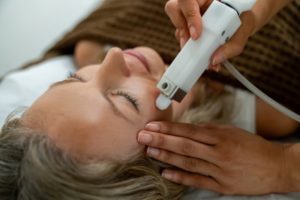
It’s typically used only on the face, and you’ll need to wear sunscreen and keep your skin out of the sun until your doctor tells you it’s safe.
- Advantages: It’s considered noninvasive because no incisions are made; however, it does remove the top layer of your skin. Results are quicker than ultrasound, radiofrequency and laser treatments to reduce loose skin.
- Disadvantages: The post-procedure healing process can be painful but managed through pain medication. Some patients also experience pain and itching. It is used on the face and neck only; it’s not a full-body procedure.
- The bottom line: Laser treatments can be effective ways to tighten loose skin on the face, and also remove unwanted spots and scars. It’s painful and isn’t a good solution for removing excess skin from the body.
What about Diet and Exercise to Rejuvenate Skin?
Diet and exercise are important components of your weight loss program. And to some extent, exercise can help build and tone your muscles, which may help reduce loose skin. Plus, exercise promotes healing and mental health, which we know can contribute to overeating.
We recommend that you adopt healthy eating habits, regardless of your weight loss program, whether it’s surgical or not. Your doctor can counsel you on the best foods for you, and they can refer you to a nutritional expert who will help you eat well before and after weight-loss programs.
We also recommend exercises within your physical limits, which your doctor can help you determine if you’re new to exercise. A simple 20-minute walk every day can have benefits. Exercise is an excellent complement to weight-reduction surgery.
What’s the Best Way to Remove Loose Skin After Weight Loss?
For patients who have had gastric bypass, lap-band surgery, gastric balloon or gastric sleeve, and want to truly remove excess skin in a safe and effective manner, surgery is the best option.
Excess skin can be removed during abdominoplasty, or “tummy tuck,” which uses a combination of fat excision, liposuction, and muscle and tissue reconstruction to remove unwanted fat and loose skin. This page will help you understand Soma Bariatrics’ approach to tummy tuck surgery.
Body contouring is another name for surgical removal of loose skin after weight loss procedures. Sometimes this procedure is referred to as a lower body lift, because it reshapes your abdomen, hips and thighs.
Surgical removal of excess skin does leave scars, but skilled surgeons know how to tuck incisions in places that aren’t normally visible and are covered by clothing. Healing time takes longer than the nonsurgical procedures; however, the effects are almost immediate and they are permanent.
The bottom line: If you have mild to moderate loose skin on your face, neck and upper arms, some of the nonsurgical techniques may benefit you temporarily. If you have moderate to severe loose skin on your body, the most effective and safest approach is surgical removal or body contouring.
When to talk to your doctor about excess skin removal
As you’re reading this article, you’re learning about options for dealing with unwanted excess skin, which will help you have a conversation with your doctor before you begin your weight loss program or undergo bariatric weight-loss surgery.
If you’d like to learn more about our tummy tuck procedures, visit our tummy tuck information page. This page explains what tummy tuck is, how it works, and what to expect before and after tummy tuck surgery. On this page, you’ll find a form you can complete and ask questions. Someone from our staff will contact you for a free consultation.

